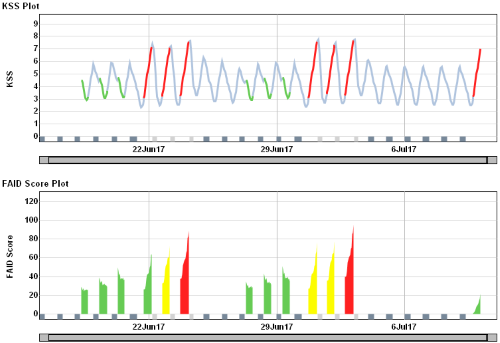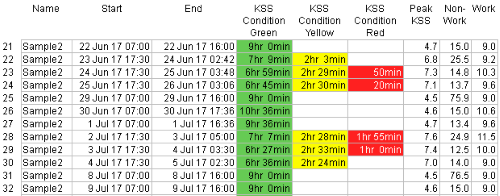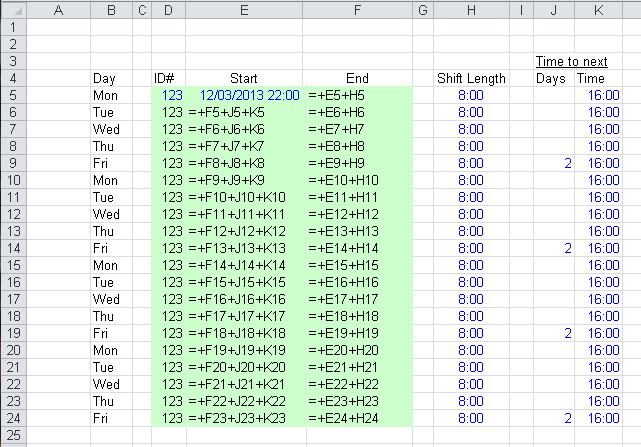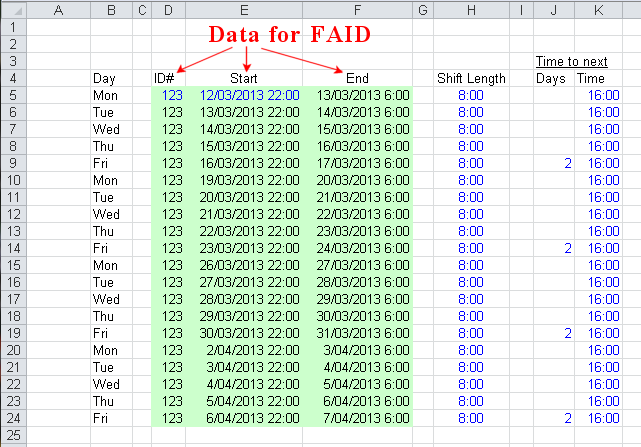There are three methods of inputting of shift data into FAID Quantum:
- Direct input via either the Single or Cycle Add Shift function within FAID Quantum
- By selecting Shifts from the Add Shift function within FAID Quantum that have been pre-defined shift from within the Settings section
- Creating the shift patterns in a spreadsheet and then copying and pasting into FAID Quantum.
Within the FAID Quantum Work Schedules (1 or 2), there is one task/shift/rostered activity record per line containing three compulsory fields of information (ID, Start, End), with optional fields like Task Risk, Origin, Destination, Activity Code, Location Start, and Location End. The optional fields need to be turned on within the Settings section of FAID Quantum.
ID can be text (ie a person's name), or value (ie payroll number) used to identify an employee or planned sequence of shifts (“line of work”).
Start and End are the date and time of the task – FAID Quantum writes these in “dd mmm yyyy hhmm” format but is quite versatile in interpreting (reading) most common date/time formats.
Task Risk (if using multiple Tolerance Levels) must be one of “Low”, “Moderate”, or “High”
For example:
Smith,1 Nov 2017 0900,1 Nov 2017 1730,Moderate
Smith,2 Nov 2017 0900,2 Nov 2017 1730,Low
Additional Information can be found in the following FAQs
Note: The FAID Quantum Roster (which also allows for the application of roster templates), FAID Quantum - Enterprise and Customised versions of FAID Quantum can also directly import shift data extracted from third party systems.






